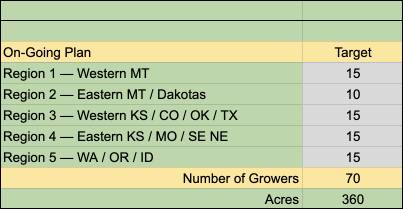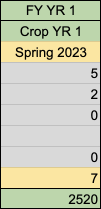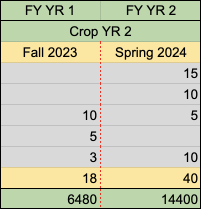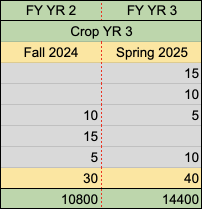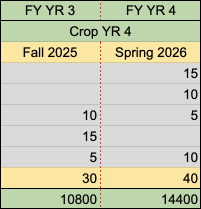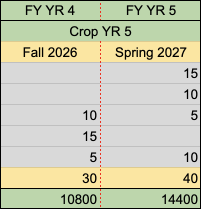
USDA CLIMATE-SMART CAMELINA PROJECT
USDA Climate Smart Commodities Grant
In September 2022, the United States Department of Agriculture (USDA) announced Global Clean Energy Holdings, Inc. was selected for participation in the Partnerships for Climate-Smart Commodities grant program. The company was awarded up to $30 million for a pilot project to measure and validate the advantages of camelina as an ultra-low carbon renewable fuel feedstock.
Objective:
Evaluation of camelina as a biofuel feedstock crop in cropping systems across five (5) agroclimatic regions in the US for its role in biofuel production, carbon sequestration, carbon intensity, regenerative agriculture, and economic viability.
Scope:
The project entails a range of measurements at different spatial and temporal scales integrated into metrics which will evaluate the production efficiency and carbon intensity of the biofuel generated, as well as soil carbon sequestration and general agronomic best practices.
Duration:
May 2023 - December 2027
Goal:
To understand how to improve on the current carbon intensity and carbon sequestration landscape for camelina growth.
Carbon Intensity (CI): From Commodity Crop to Differentiated Crop
Gain market acceptance for paying a premium for documented CI lower than a baseline value.
Improve current models used as the standard for calculating CI and the overall system for tracking CI.
Carbon Sequestration: Pay for Performance vs. Pay for Practice
Measure, report, and validate actual change in Soil Carbon Sequestration regardless of practice or length of time in a practice.
Turn soil carbon sequestration into a balance sheet asset for growers.
Expected Outcomes
Measurement
Multiple methods of data collection will be utilized in order to cross reference approaches as well as calibrate sensors and validate models for long-term, low-cost camelina scalability.
Benefits
To increase overall soil health, increase the total carbon sequestered, and decrease the carbon intensity from growing camelina.
Obtain more accurate measurements to prove the environmental benefits of growing camelina.
Provide growers with access to affordable and reliable measurement.
Model and Sensor Development
Earth Daily Agro
Crop Cycle Detection
Carbon Index Model
Yield and Oil Model
Change Detection
Intellinair
Crop Production Analysis
Crop Yield Estimation
ARVA Intelligence
GHG Exchange
Carbon Sequestration
Field Level Carbon Intensity
Earth Optics
Calibrate and Refine GPR Sensor and Algorithms
Yardstick
Calibrate and Refine In-Situ Sensor and Algorithms
Regions
Climate-Smart Camelina will be grown in five (5) diverse agroclimatic regions that will give a broad cross section of data to analyze.
This will help evaluate impact of climate, cropping systems, and farming practice to evaluate the climate-smart benefits of camelina.
Partners
Provide weather stations and soil probes as data input to models.
Provide weather stations and soil probes as data input to models.
Satellite imagery, crop cycle and yield model, carbon model refinement.
Project MRRV Lead; calculate carbon and water balnces using direct measurements and models.
Sat/FW/Drone imagery and crop growth stage model development.
Backoffice database architecture and data capture.
TEA, LCA, and biophysical flux model development and evaluation to assess CO2 exchange and H20 use by the crop. Publish results.



